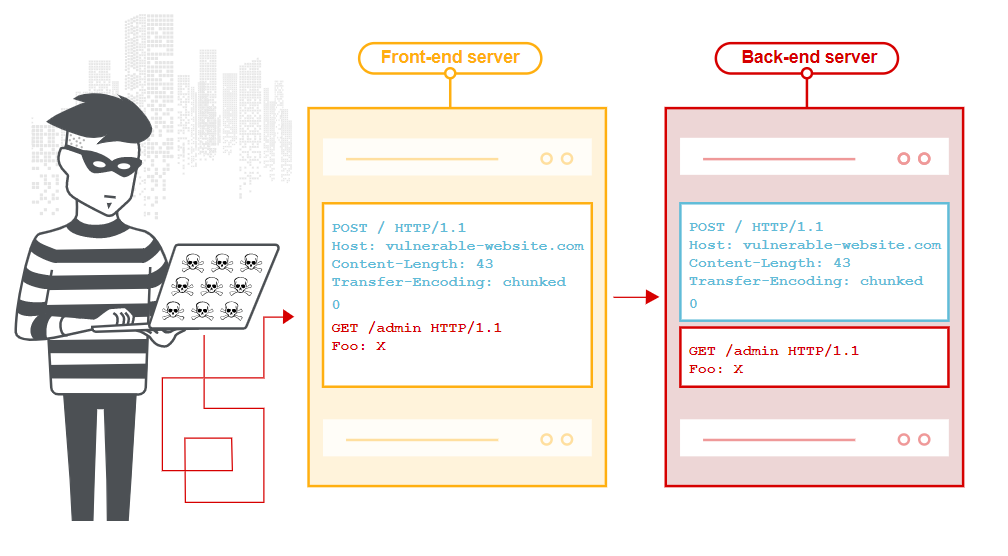2021-02-15 04:49:59 Author: medium.com(查看原文) 阅读量:315 收藏
This is the report of my first bug. The bug was HTTP Request Smuggling for which I got a bounty of $200.
During my recon when I found all the possible subdomains I just started visiting them one by one, the vulnerable subdomain gave a 403 Forbidden error along with the version of the webserver.
Then I checked the Burpsuite’s passive scanner which picked up the version number and reported that this version might be vulnerable.
The website was using an old version on Web-Server which extends Nginx, this older version of web-server caused the website to allow this desync attack.
As I understand HRS is this vulnerability where an attacker can send an ambiguous request which can desynchronize the servers, leaving the socket to the backend poisoned with a harmful response. This response will then be served up to the next visitor.

On this domain the desync occurs when we send a request with a Content-Length header and Transfer-Encoding header, the front-end server uses the Content-Length header and the back-end server uses the Transfer-Encoding header, which allows us to perform an HTTP request smuggling attack.
POST /i HTTP/1.1
Host: ...
Connection: keep-alive
...
Content-Length: 55
Transfer-Encoding: chunked 0 GET /publicDocs/ HTTP/1.1
Host: ...
foo: x
Since this technique allows attackers to bypass rules in frontend systems, it may also be possible to access internal content that’s meant to be private.
So I found a login page which was meant for the staff only and a few other Documents which normally gave 403 errror but through this technique we got a 200 status code.
This was my first report on a bug-bounty platform and finding a valid bug and getting a bounty was a great experience. I learned a lot about how to write a good report, I learned a lot from disclosed report and portswigger’s website.
If you liked my report please leave a bunch of claps!!
Resources I used to learn more about this bug
如有侵权请联系:admin#unsafe.sh